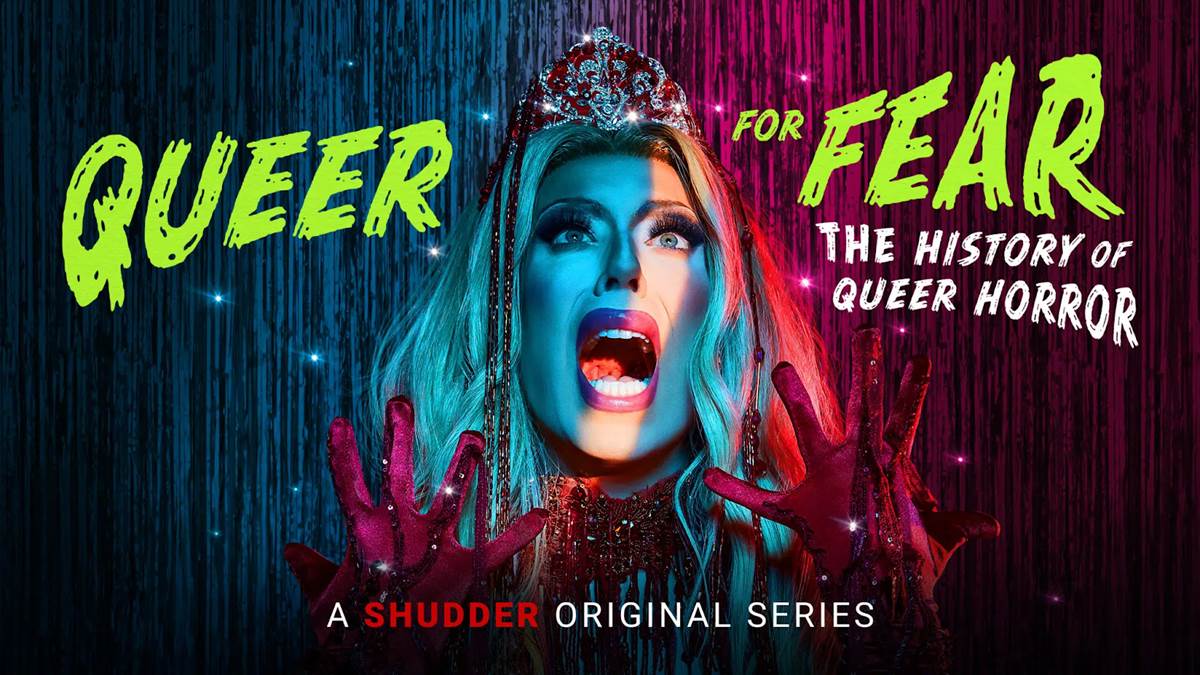“All you need is one example of survival to know it’s possible for you, and I think that really resonates with a lot of Queer audiences who are drawn to horror stories,” said Bryan Fuller during a TCA press conference for the Shudder documentary series Queer for Fear: The History of Queer Horror, which premiered today. The writer/producer famous for Dead Like Me, Pushing Daisies, Star Trek: Discovery, and Hannibal serves as executive producer on Queer for Fear, which explores the influence of the LGBTQ community throughout the horror genre’s history. “I think there’s something really interesting about the survival narratives of a lot of these horror movies and the reason that we’re drawn to them, whether we feel ostracized like the monster, or we feel like if we can survive an abusive parent like Danny Torrance in The Shining, then there’s hope for us.”
Producing alongside Bryan Fuller is Steak House, one of the driving forces behind Disney’s experimental short film program Launchpad, which included a story about a lesbian vampire called Growing Fangs. “Even as far back as Bewitched and My Favorite Martian, I just remember identifying with these very nice men who were different than the other men,” Steak House shared about her origins with feeling represented through queer-coded characters in film and television. “I just thought, oh, these are kinda cool dudes. Who are they? And not really knowing what the deal was.” We’ve come a long way from the campy pop-ins of Uncle Arthur (Paul Lynde) or the questionable bachelor life of Tim O'Hara (Bill Bixby) and his “Uncle Martin” (Ray Walson) and the hunky men they were famous for inviting over, with queer characters now allowed to be overtly stated. “Having a broad spectrum of characters representing us is amazing. Not just one kind of us. That's what we want to see is a huge diversity of Queers everywhere.”
“I pretty much knew I was a lesbian when I saw Prisoner: Cell Block H,” Orange is the New Black star Lea DeLaria shared about the power of representation in media (she also voiced Miss Fritter in Cars 3, a demo derby school bus with a rainbow lightning bolt decal to express her sexuality and Lightning McQueen fandom). “Honestly, when Bryan texted me and said, ‘Look, I want to call you and talk to you about this thing,’ so he calls me and he talks to me, and the whole time I’m listening to him thinking there can’t be that many of us out there. And then showing up at the studio and seeing how many of us feel this way, I think the biggest thing I learned was that we have a shared experience as Queers that I never knew we had, and trust me, honey, I’ve been Queer a long time, I thought I knew everything. So that was just amazing to me.”
A common theme for queer people with older, classic horror films is identifying with the monster or the villain. “We don't have to do anything for someone to misread us or to pathologize us,” explained producer Nay Bever. “We have had to always kind of separate out what is respectability politics and what is our reality. And at some point, we desperately need to make our art without taking into consideration other people, straight folks' thoughts on how it will come across because they've been reading us wrong since forever. They've never had it right, and we've always had to speak for ourselves.” A double-edged sword, horror films have not only helped queer people feel seen at a time when that was rare, but the connotations were typically dark. “There’s so much healing power in hearing your stories reflected in other people,” Nay added about the experience of working on Queer for Fear.
“We felt like monsters, so there is the danger then that a straight world might say, well, the monster's bad,” shared Boys Don’t Cry director Kimberly Pierce shared, who is featured in on-camera interviews in the series, but also serves as a producer. “If you pay attention, what we're really saying is we are the monster. We are the human. You need to embroider that within your understanding of watching it. We're always in danger of being misinterpreted, but I think that simply by virtue of doing this and being here, we are humanizing the narrative.” Kimberly also found the experience of being involved with Queer for Fear to be healing. “We were all having our own individual experiences feeling isolated in coming to these materials, whether it was Frankenstein, whether it was Mrs. Danvers in Rebecca. We were all trying to figure ourselves out through it, and that we were emancipated by it, and that we were excited by it. I think it’s really cool, too, that we all have re-co-opted the monster, because I think it’s interesting in ‘straight culture, it’s like, ‘Oh, I don’t want to be weird. I don’t want to be Queer. I don’t want to be the monster,’ and we’re all like, ‘I am totally weird. I’m totally Queer, and I am totally a monster, so let’s have a good time with it.’ I think that’s the greatest superpower of Queerness is just we said screw it, right? I’m going to have a good time, and I’m going to inhabit this thing that is hated and turn it around. That, to me, is a superpower, and I have all these friends and people that I love and respect, and all of these guys who are creators as well. That’s what thrilled me.”
The first episode of the four-part documentary series Queer for Fear: The History of Queer Horror is now streaming on Shudder, with new episodes launching on Fridays.

